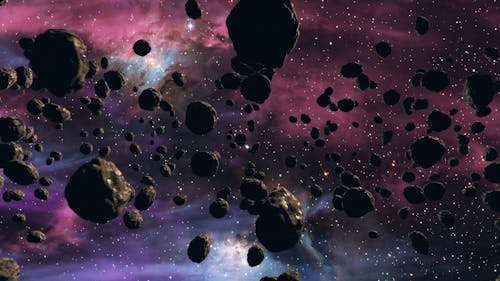Asteroids, Comets, and Meteoroids

Here's an overview of Asteroids, Comets, and Meteoroids:
Asteroids:
- Small rocky objects orbiting the Sun
- Most found in the asteroid belt between Mars and Jupiter
- Range in size from a few meters to hundreds of kilometers in diameter
- Composed of rock and metal, remnants from the early Solar System
- Some asteroids are thought to be the remains of a planet that never formed
Comets:
- Icy bodies that release gas and dust as they approach the Sun
- Composed of water, methane, and ammonia ices, with rocky particles
- Originates from the outer Solar System, in the Oort Cloud or Kuiper Belt
- Orbits are highly elliptical, taking them close to the Sun and then out to the outer reaches
- Can produce bright tails of gas and dust when approaching the Sun
Meteoroids:
- Small rocks or pieces of debris in space
- Can be fragments of asteroids or comets
- Enter the Earth's atmosphere, becoming meteors (shooting stars)
- If they survive the passage through the atmosphere, they land on Earth as meteorites
Key differences:
- Asteroids are rocky and orbit the Sun in stable paths
- Comets are icy and have highly elliptical orbits, releasing gas and dust near the Sun
- Meteoroids are small rocks or debris that enter the Earth's atmosphere, potentially landing as meteorites
These objects offer insights into the formation and evolution of our Solar System, and their study helps us better understand the origins of life on Earth.
✍ Share Your Knowledge with Our Community!
get rewards for paying bills
upto ₹250 off when you pay your first bill on CRED
